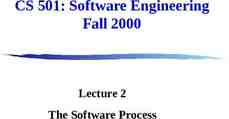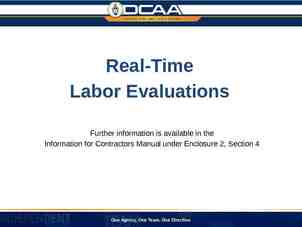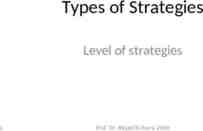Electronic Commerce Yong Choi School of Business CSU, Bakersfield
29 Slides815.00 KB

Electronic Commerce Yong Choi School of Business CSU, Bakersfield

Definition of EC Electronic commerce (EC) is an emerging concept that describes the buying and selling of products, services and information via and the Internet and computer networks (EDI). E-Business?

History of EC 1970s: Electronic Funds Transfer (EFT) – Used by the banking industry to exchange account information over secured networks Late 1970s and early 1980s: Electronic Data Interchange (EDI) for e-commerce within companies – Used by businesses to transmit data from one business to another 1990s: the World Wide Web on the Internet provides easy-touse technology for information publishing and dissemination – Cheaper to do business (economies of scale) – Enable diverse business activities (economies of scope)

Why business is interested in EC? Not just save cost and increase productivity – Paper check Vs. E-check Change the nature of competition – Etrade.com / Amazon.com Create new businesses – Citrix.com / Priceline.com

Ecommerce infrastructure Information superhighway infrastructure – Internet, LAN, WAN, routers, etc. – telecom, cable TV, wireless, etc. Messaging and information distribution infrastructure – HTML, XML, e-mail, HTTP, etc. Common business infrastructure – Security, authentication, electronic payment, directories, catalogs, etc.

E-COMMERCE BUSINESS MODELS 5-6

Some examples B2B: GM and suppliers (SCM) B2C: Amazon C2B: Priceline C2C: ebay G2C: Paying tax, Vehicle registration B2G: Lockheed (prodcuts/services to DoD)

E-Commerce Security Cryptography – Encryption and decryption of information Secret Key (symmetric) Cryptography Public Key (asymmetric) Cryptography Digital Signature 8

Cryptography Any information (such as order) in cyberspace must be delivered securely using cryptography technology. History of Cryptography Rewrite contents (encryption) so that they cannot be read without key – Encrypting function: Produces encrypted message – Decrypting function: Extracts original message Method – Secret key Cryptography – Public key Cryptography – Digital signature

Secret Key Cryptography Use a single key – Key: a set of random numbers to encrypt/decrypt information Known as symmetric encryption or private key encryption The same key is used by sender and receiver Easy to use, suitable when only two distinctive parties are involved Less secure (than public key cryptography), when many parties are involved 10

Secret Key Cryptography (symmetric) Keysender ( Keyreceiver) Original Message Sender Scrambled Message Encryption Internet Keyreceiver Scrambled Message Original Message Decryption Receiver 11

Public Key Cryptography Use a pair of key (public and private) Known as asymmetric encryption The public key – Known to all authorized users The private key – Known only to key’s owner Easy to use, more secure (than secret key cryptography), suitable when many parties are involved Requires sharing of both keys 12

Public Key Cryptography Mechanism Public Keyreceiver Message Original Message Sender Scrambled Message Private Keyreceiver Internet Scrambled Message Original Message Receiver 13

Digital Signature Public key cryptography problem – Receiver cannot ensure that a message is actually coming from sender. Your subordinate can send a fake message using your email system - which looks originated from YOU! - to partner. 14

Digital Signature Goal – Guarantee that message must have originated with a certain entity (increase security) Idea – Encrypt digital signature with private key – Decrypt digital signature with public key Only owner of private key could have generated original signature 15

Digital Signature Private Keysender Digital Original Signature Message Sender Scrambled Message Public Keysender Internet Scrambled Message Original Message Receiver

Developing a Web site Define the objective of the web site – – – – – Identify your target audience Have a statement of purpose Know your main objectives Have a concise outline of the information your site will contain. Determine the web site’s contents Design the web site Build the web site Test the web site

Planning Analysis of the Web Site Objective – Develop marketing corporate web site that provides relevant company information and allows consumers to place orders Web site contents – – – – – Company description List of products and prices List of available job positions Feedback, Order, and Search forms Travel Discussion and Web DB Table

Design of the SMP website Home Page Employmen t Products Banner Links Contents Travel Service Feedback Search Drink Fruit Gifts Ordering Gift Gift Baskets Information Packs Packs Order Form

Example of EC Website BPA Yong Choi

To publish the Web Site You are creating so called “disk-based website”, which means your web site will not display all the components and functions properly unless you publish thru “web server.”














